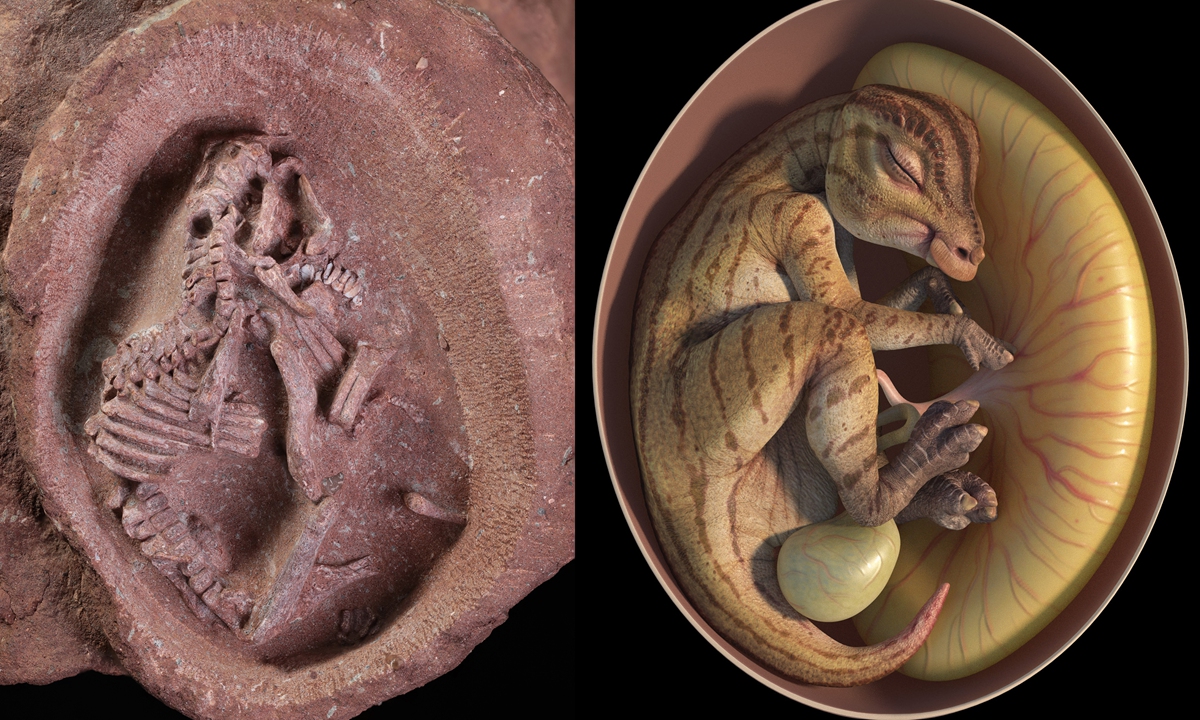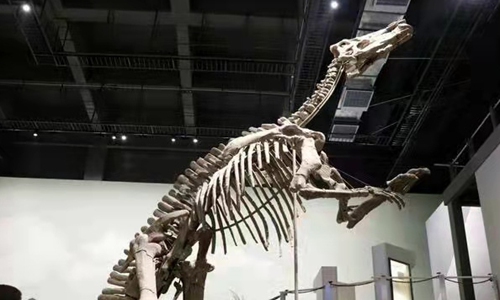
The world's most complete duck-billed dinosaur embryo ever scientifically recorded has been found in China.
Two dinosaur embryo fragments from the Upper Cretaceous have been found in East China's Jiangxi Province, according to a thesis published on Wednesday, this is the most complete duck-billed dinosaur embryo ever scientifically recorded.
The thesis, co-published by the Yingliang Stone Natural History Museum, China University of Geosciences, and scholars from China's Taiwan and Canada, has answered a slew of questions on how the dinosaurs evolve and reproduce. The specimens are dubbed the "Ying Baby" by the Yingliang Stone Natural History Museum in East China's Fujian Province, where it is currently housed.
The Ying Baby, whose egg is an ellipsoid with a diameter of roughly 9 centimeters, originated from the Late Cretaceous strata in Jiangxi, dating back to about 72 to 66 million years ago.
Judging by the unique shape of the skull, vertebrae and limb bones of the embryo, scientists inferred that it belonged to a duck-billed dinosaur, or hadrosaurids, a class of large herbivore dinosaurs that lived at the end of the dinosaur era and was characterized by its duck-like flat beaks.
While this is not the first time that such kind of embryo is found, the Ying Baby is by far the best-preserved one ever discovered.
One of the most important new pieces of knowledge it provides about the development of dinosaurs is that the modest size of both the egg and embryo suggests that small eggs and late body development were a primitive trait of duck-billed dinosaurs.
Since 1859, a large number of dinosaur egg fossils have been found in many Mesozoic strata around the world and in China, especially fossils belonging to the late Cretaceous period. Very few of the previously discovered eggs still contained fossilized embryos, making Ying Baby one of the rarest existing fossils to date. These fossils could provide valuable information for the study of the reproductive development, behavior, evolution, and paleoecology of dinosaurs.
Global Times


